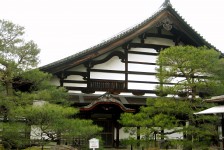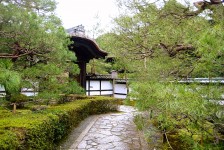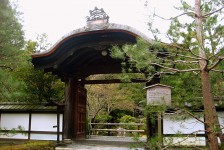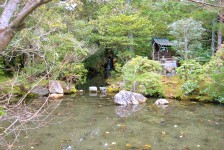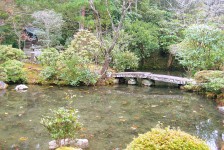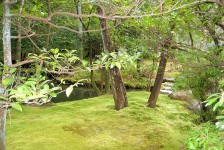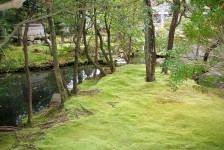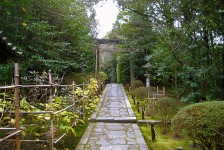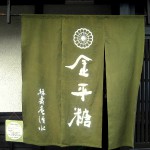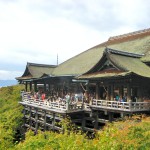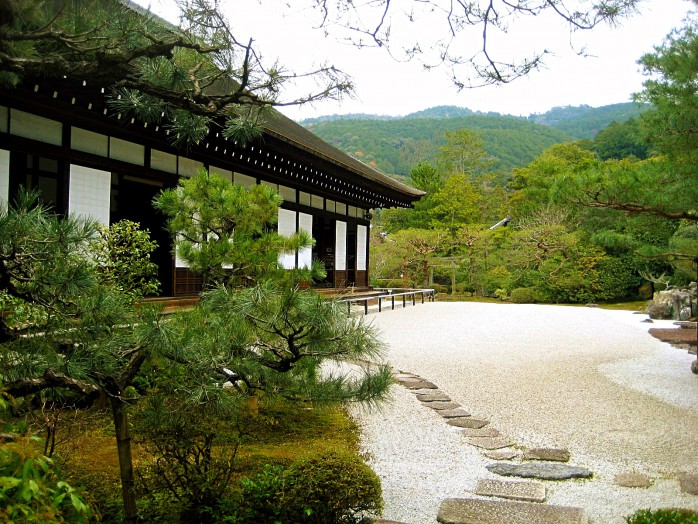
Leonardo da Vinci
He is called Universal Man, and left many achievement for picture, engraving, architecture, music, science, mathematics, engineering, invention, anatomy, earth science, topography, botany and so on.
Kobori Enshu was the 2nd lord for the domain of Bichu Matsuyama,the after that, he became the 1st lord for the domain of Omi Komuro, but he also took an active part in the tea ceremony, the art of flower arrangement, architecture, garden designer, ceramic art, invention, calligraphy, poem and so on.
Consequently, he is called Leonard da Vinci of Japan.
It is enviable he has versatile ability!
This is off the topic,but there is a Konchi-in Temple that is sub-temple of Nanzen-ji Temple in Kyoto.
 Konchi-in Temple was founded around 1400 by the 4th shogun of Muromachi regime in the north area of Kyoto, after that, it was dismantled and reconstructed to the east area of Kyoto (current place) by Konchiin Suden who was a right-hand man of the 1st shogun Tokugawa Ieyasu of Edo regime.
Konchi-in Temple was founded around 1400 by the 4th shogun of Muromachi regime in the north area of Kyoto, after that, it was dismantled and reconstructed to the east area of Kyoto (current place) by Konchiin Suden who was a right-hand man of the 1st shogun Tokugawa Ieyasu of Edo regime.
There is a Tosho-gu Shrine that was built by Tokugawa Ieyasu’s dying words in the compound of Konchi-in. The hair of Tokugawa Ieyasu and Buddha is enshrined in the Tosho-gu Shrine.
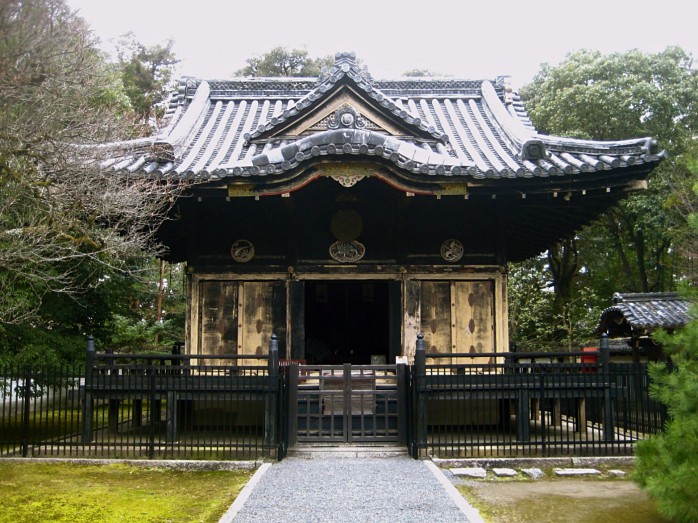 And also, Konchi-in Temple has a beautiful Japanese traditional rock garden that was designed by Japanese Leonard da Vinci Kobori Enshu
And also, Konchi-in Temple has a beautiful Japanese traditional rock garden that was designed by Japanese Leonard da Vinci Kobori Enshu
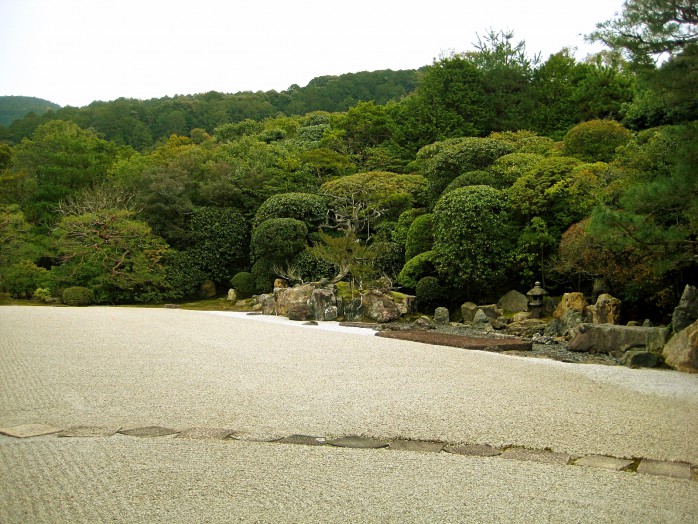
There are many gardens that is said designed by Kobori Enshu, but Konchi-in Temple’s garden is only one garden that accurate the historical document is left.
By the way, when you listened to name of Leonard da Vinci, didn’t you call “The Da Vinci Code” to mind?
It became a popular topic of conversation with mystery novel that was made into movie of American author Dan Brown.
It is thrilling story symbologist Robert Langdon of Harvard University solves the mystery hidden in the Da Vinci’s production “Last Supper”, “Vitruvian Man”, “Mona Lisa” and so on.
On the other hand, has Japanese Leonard da Vinci written something code in garden of Konchi-in?
I will proceed with questionnaire mode.
Do you know what mean the spread white sand in front of the main building of the temple?
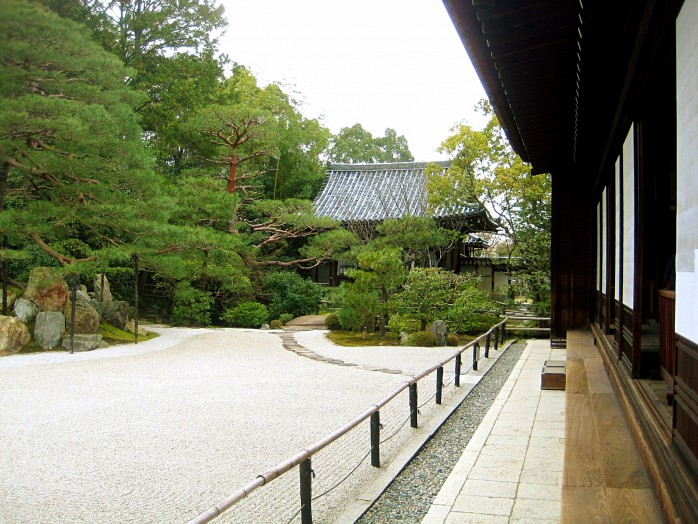
The answer is ocean.
Then, what’s this stones crowd?
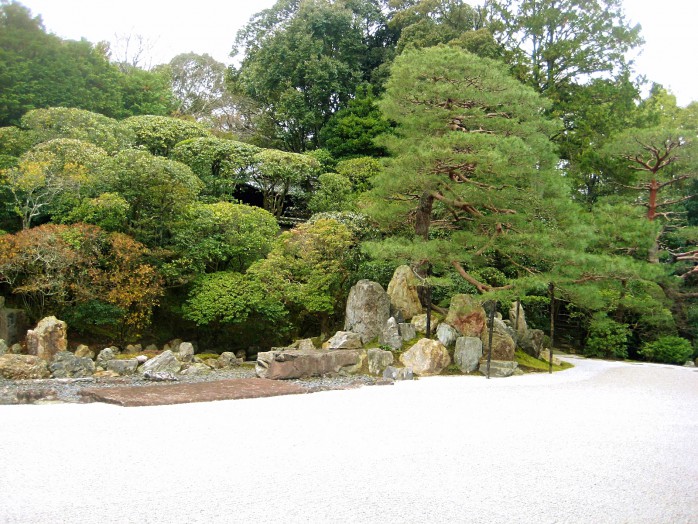
The answer is “crane”.
What’s this stones crowd?
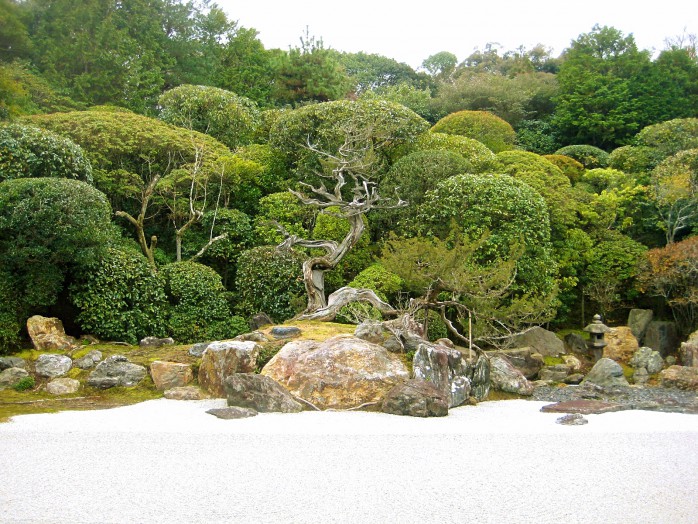
The answer is “turtle”.
This garden is called crane and turtle garden, so we can judge what is described in advance.
That means it is not code”. (^^;
The code is not hidden, but contrivance that delight eyes of visitors is worked into the garden.
Where is that?
Eyestop is object that is placed deliberately so that people can attract attention. Stone lantern and stone monument play the role in Japanese traditional garden.
The stone lantern is placed in the center of Konchi-in Temple garden also. The depth of garden is emphasized by perspective what small stone lantern is placed in the front against to the big stone of right and left.
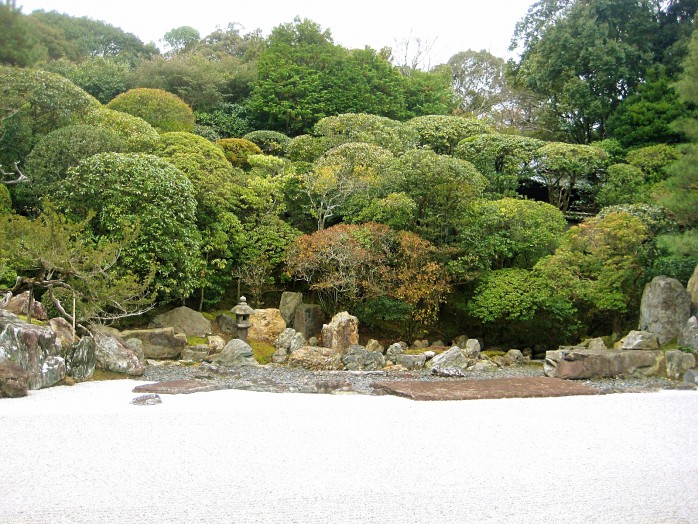
By the way the rectangle stone between crane and turtle was placed in order to worship Tosho-gu Shrine.
When you visit Konchi-in Temple, let’s enjoy the garden from various angle.
People who have many arts like Leonard da Vinci and Kobori Enshu are limited.
On the other hand, there is a proverb “Art brings bread”.
It means, if you acquire an art, it will be helpful for you, and it might become foundation to make your livelihood.
Some people might think I don’t have no art.
Is that true?
For example, if there is a man who is good at getting up early, the man can use the early morning time effectively.
It is not unuseful art now, but it might become useful some other time.
Let’s found anything your art!
<Japanese WEB site>
http://japan-history-travel.com/?p=4498
<Location>
Konchi-in Temple:
86-12 Fukuchi-cho, Nanzenji, Sakyo-ku, Kyoto, Japan
Post code: 606-8435

